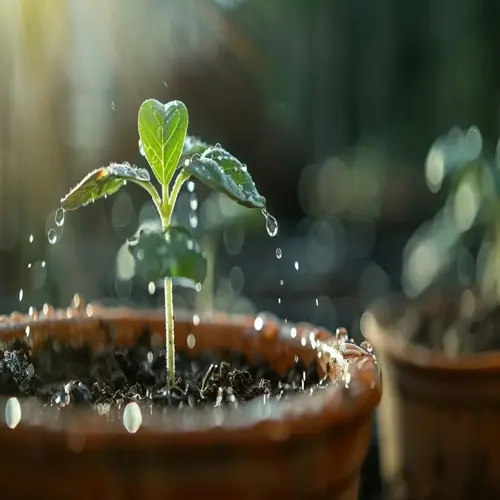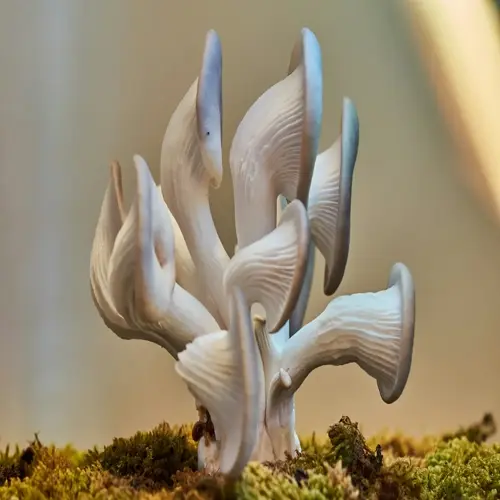10 Expert Tips: How to Grow Peppers in Containers

Written by
Tina Carter
Reviewed by
Prof. Charles Hartman, Ph.D.Discover tips for growing peppers in a container with appropriate drainage and soil mixes.
For small spaces, select compact varieties of peppers like jalapeños or mini bells.
Use containers with at least 5 gallons capacity, and place these containers in a location with at least 6 hours of full sunlight a day.
Water the peppers when the topsoil feels dry, and fertilize every 2 to 4 weeks during vegetative growth.
To harvest the peppers, pick them at maximum coloring with a pair of sterilized shears, so as not to be invasive to the plant.
If you have issues with blossom end rot, apply calcium to the soil immediately.
Article Navigation
Knowing how to grow peppers in containers means you can take advantage of garden-fresh produce even if you have very little outside space. I have also grown peppers on my balcony in an apartment for years. Containers allow you to control the quality of the soil, the amount of sun exposure, and everything else. All this information is excellent for city folk with a small patio.
You can move pots around to follow the sun or to protect them from inclement weather. This will significantly extend your growing season. Stick with shorter pepper plant varieties, like jalapeños or mini bells. Both sweet and hot peppers can be grown in containers with proper care and attention.
This guide will discuss soil preparation, container selection, and everyday care. We'll discuss watering methods and explore the best ways to harvest. You'll find out what mistakes I made often at the beginning. Get prepared for a successful pepper harvest right beyond your door.
Choosing Containers and Potting Mix
Choosing the right container has a significant impact on the success of pepper growing. Terracotta pots have a great look, but they can dry out quickly during hot weather. Fabric grow bags have excellent drainage and air pruning, which helps develop healthier roots. For my balcony garden, I use fabric grow bags since they help prevent waterlogged plants.
It is essential to achieve balance in your soil mix. Too much compost can retain excessive moisture, which can lead to root rot. A 30% compost ratio with potting soil and perlite will work well and provide nutrients without losing drainage. Check moisture levels with your finger before watering every morning.
Your choice of fertilizer will have a direct impact on the fruiting of container-grown peppers. In my experience, it's best to start the plant off with a slow-release granular form. Then, during flowering, switch to a liquid feed. With a confined root system, the nutrient supply is depleted quickly, necessitating frequent replenishment. I use fish emulsion weekly to promote vigorous growth, especially for the fruit plants.
Portable containers allow urban gardeners to pursue sunlight on their patios. Move plants to shelter them from the hot afternoon sun. Bring them in to protect them from early frosts and keep extending your harvest. Mobility solves the limitations of space, making it possible to have peppers anywhere, from fire escapes to rooftop gardens.
Compost Base
- Function: Provides slow-release nutrients and improves moisture retention
- Use well-decomposed compost to prevent nitrogen imbalance during growth
- 60% volume ensures adequate organic matter for root development
Aeration Agents
- Function: Prevents soil compaction and enhances oxygen flow
- Perlite or vermiculite (20% volume) maintains loose structure
- Wood fines alternative offers similar drainage at lower cost
pH Balancers
- Function: Maintains optimal soil acidity between 5.5 and 7.0
- Add lime to raise pH in acidic conditions above 7.0
- Use sulfur to lower pH in alkaline conditions below 5.5
Mycorrhizal Fungi
- Function: Enhances nutrient absorption through symbiotic root relationships
- Boosts phosphorus uptake critical for flowering and fruit development
- Reduces fertilizer needs by 30% in container-grown peppers
Worm Castings
- Function: Provides micronutrients and beneficial soil microorganisms
- Contains natural growth hormones stimulating root development
- Improves water retention while preventing soil compaction issues
Selecting the Best Pepper Varieties
Choosing pepper varieties begins with understanding the growth habits of pepper plants. For instance, compact dwarf types, such as Mini Bell, work well in small areas, but sprawling varieties require huge containers. Heat-tolerant types are suitable for a southern climate; quick-maturing types are well-suited for cooler climates.
Think of peppers as both fresh for your kitchen and for preservation, because they caramelize so well. Jimmy Nardello does both quite nicely, fresh in salads or cooked down for conservation. With shallow root systems, peppers are perfect for container gardening, which also means they do not need a deep pot. Peppers perform well in small urban gardens.
The Lipstick Pimiento is my current balcony favorite, mostly because of its container size. It produces a large amount of fruit without occupying the limited space. Look for small varieties bred for pots; they have better resistance to most plant diseases. If the plants are adapted to your environment, the yield will be better!
Hot peppers, such as Early Jalapeño, will do well as container plants. They deal with the temperature fluctuations often associated with balconies. Sweet peppers need steady warmth, so place them against sun-heated walls. Always opt for compact growth with small-space gardening.
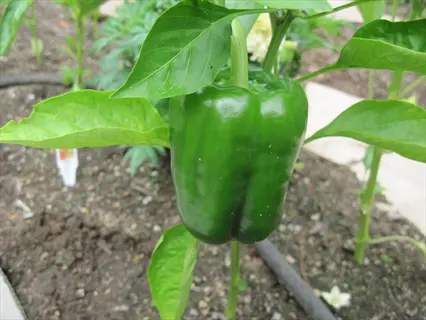
California Wonder
- Type: Classic sweet bell pepper with exceptionally thick walls that make it ideal for stuffing with various fillings
- Growth Habit: Compact plants grow to 24 inches tall and work perfectly in 5-gallon containers with minimal staking required
- Fruit Characteristics: Produces large 4-inch blocky fruits that transition from deep green to vibrant red when fully mature
- Time to Maturity: Ready for harvest at green stage in 75 days or fully ripened red peppers at 90 days after transplanting
- Container Care: Requires consistent moisture and full sun exposure while being resistant to common pepper diseases in pots
- Climate Adaptation: Performs well in both humid and moderate climates but benefits from afternoon shade in extreme heat
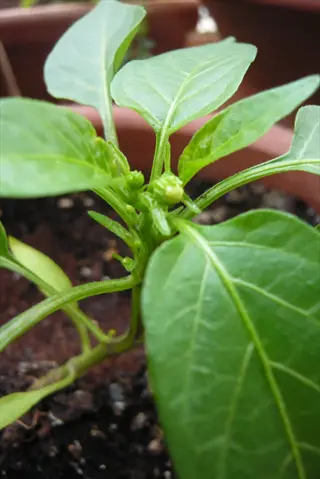
Mini Bell
- Type: Specially bred dwarf sweet pepper variety producing petite 2-inch fruits perfect for small space gardening
- Growth Habit: Compact bushes reach only 18-20 inches tall making them excellent choices for windowsill containers
- Fruit Characteristics: Heavy yields of colorful mini peppers in mixed shades of red, yellow, and orange simultaneously
- Time to Maturity: Quick producer ready for first harvest just 60-65 days after transplanting into containers
- Container Care: Thrives in 3-gallon pots with well-draining soil and tolerates slightly less light than larger varieties
- Climate Adaptation: Handles temperature fluctuations well and continues fruiting in both warm and cooler conditions
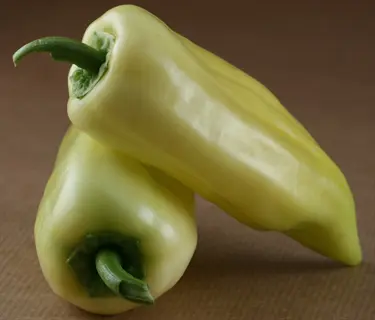
Sweet Banana
- Type: Mild yellow banana pepper growing 6-8 inches long with a sweet flavor and thin crisp walls
- Growth Habit: Slender plants grow 24-30 inches tall but require minimal staking due to their upright nature
- Fruit Characteristics: Bright yellow fruits curve slightly and are perfect for pickling or fresh eating in salads
- Time to Maturity: Ready for harvest approximately 70 days after transplanting when fruits reach full size
- Container Care: Prefers consistent moisture in 5-gallon containers and benefits from monthly fertilizer applications
- Climate Adaptation: Tolerates warmer temperatures better than most peppers but needs protection from strong winds
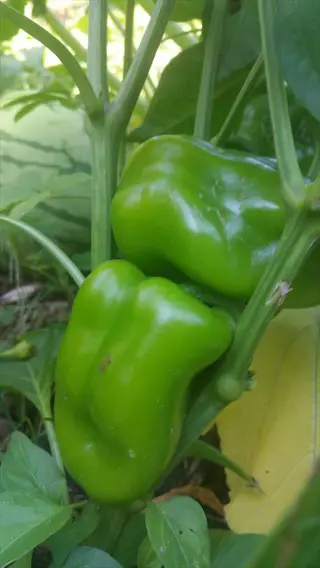
Lipstick Pimiento
- Type: Distinctive heart-shaped sweet pepper with pointed tip and rich flavor perfect for roasting and sauces
- Growth Habit: Compact plants reach 24-28 inches tall and fit well in 5-gallon containers with tomato cage support
- Fruit Characteristics: Thick-walled fruits turn from green to glossy deep red when fully ripe with exceptional sweetness
- Time to Maturity: Requires 80-85 days to reach full maturity and develop its signature rich flavor profile
- Container Care: Needs regular watering to prevent blossom end rot and monthly balanced fertilizer applications
- Climate Adaptation: Prefers consistent warm temperatures but can handle brief cool spells better than most peppers
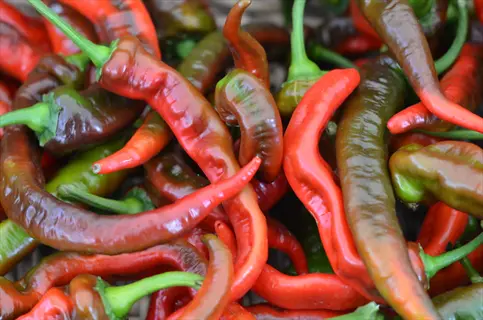
Jimmy Nardello
- Type: Heirloom Italian frying pepper with thin walls that caramelize beautifully when sautéed or roasted
- Growth Habit: Vigorous plants grow 30-36 inches tall requiring sturdy 7-gallon containers and solid staking
- Fruit Characteristics: Long slender fruits transition from bright green to crimson red with intense sweetness
- Time to Maturity: Ready in 75-80 days with continuous production throughout the growing season until frost
- Container Care: Requires daily watering in hot weather and biweekly fertilizer to support heavy fruit production
- Climate Adaptation: Thrives in hot sunny conditions but benefits from afternoon shade in extreme temperatures
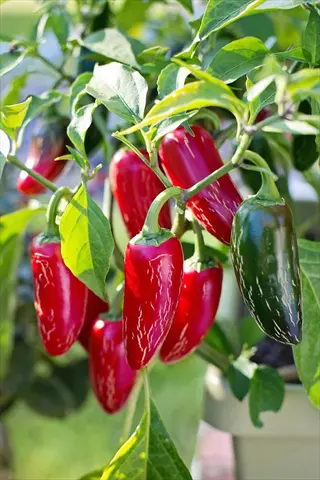
Early Jalapeño
- Type: Medium-heat chili pepper perfect for beginner growers with reliable production in container settings
- Growth Habit: Bushy plants grow 24-28 inches tall and fit perfectly in 3-5 gallon containers with support
- Fruit Characteristics: Classic 3-inch dark green peppers develop signature corking and medium heat when mature
- Time to Maturity: Fast producer ready for first harvest just 65 days after transplanting into containers
- Container Care: Requires consistent moisture and monthly fertilizer with calcium to prevent blossom end rot
- Climate Adaptation: Handles temperature variations well and continues producing in both warm and cool spells
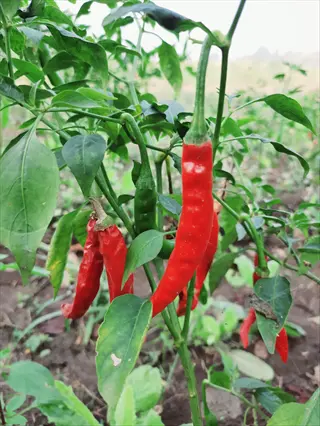
Cayenne Long Thin
- Type: Classic spicy pepper growing 6-8 inches long with curved shape and medium heat level around 30,000-50,000 Scoville units
- Growth Habit: Tall plants reach 30-36 inches requiring 7-gallon containers and sturdy tomato cages for support
- Fruit Characteristics: Slender fruits start green and ripen to bright red perfect for drying or hot sauce making
- Time to Maturity: Ready for harvest approximately 75 days after transplanting when fruits reach full length
- Container Care: Needs regular deep watering and biweekly fertilizer to support continuous fruit production
- Climate Adaptation: Thrives in hot conditions but slows production during temperature drops below 60°F (15°C)
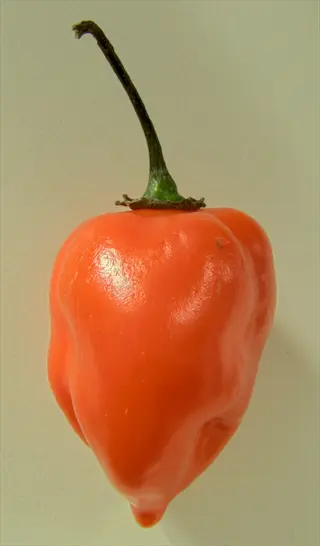
Orange Habanero
- Type: Extremely hot pepper with distinctive floral tropical notes measuring 100,000-350,000 Scoville heat units
- Growth Habit: Compact plants grow 18-24 inches tall making them surprisingly suitable for 5-gallon containers
- Fruit Characteristics: Small lantern-shaped fruits transition from green to vibrant orange with intense heat
- Time to Maturity: Requires 90-100 days of warm weather to fully develop flavor and heat characteristics
- Container Care: Needs excellent drainage and consistent warm temperatures above 70°F (21°C) for best results
- Safety Note: Always wear gloves when handling these peppers and avoid touching face due to potent capsaicin oils
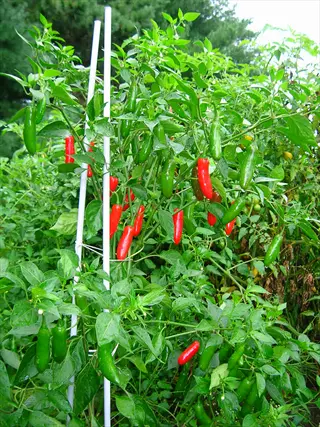
Serrano Tampiqueno
- Type: Hotter alternative to jalapeños with crisp texture and heat level around 10,000-25,000 Scoville units
- Growth Habit: Productive plants reach 24-30 inches tall and perform well in 5-gallon containers with staking
- Fruit Characteristics: Small 2-inch cylindrical peppers start green and ripen to red with excellent crunch
- Time to Maturity: Ready for harvest approximately 75 days after transplanting with continuous production
- Container Care: Requires daily watering in hot climates and monthly balanced fertilizer for optimal yields
- Climate Adaptation: Thrives in consistently warm conditions and struggles when temperatures drop below 50°F (10°C)
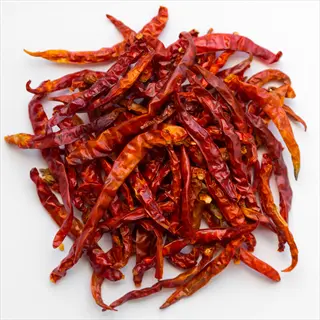
Thai Hot
- Type: Extremely hot Asian variety with small fruits packing intense heat around 50,000-100,000 Scoville units
- Growth Habit: Compact plants reach just 18 inches tall making them perfect for small containers on patios
- Fruit Characteristics: Tiny 1-inch peppers grow in clusters pointing upward and ripen from green to bright red
- Time to Maturity: Very productive with first harvest around 85 days and continuous fruiting until frost
- Container Care: Prefers consistent moisture and warm conditions but can tolerate brief dry spells better than most
- Culinary Use: Essential ingredient in Southeast Asian cuisine and perfect for making fiery hot sauces and pastes
Planting and Care Guidelines
Peppers thrive at specific temperatures at each stage of growth. The seeds germinate best at temperatures between 80-90°F (27-32°C) and then mature plants prefer daytime temperatures between 70-85°F (21-29°C). Nighttime temperatures should be above 60°F (16 °C) for adequate fruit set. I have just a basic thermometer to monitor my microclimate on my balcony.
Watering needs differ depending on the material in which you contain the plant. Terra cotta will dry fastest, so check daily. Plastic retains moisture longer. Water when the top inch of soil is dry, usually in the morning during summer, and continue watering until the water has drained from the bottom to prevent a buildup of salts.
Fertilize wisely at key growth stages. Use a balanced fertilizer at planting time, then switch to a high-potassium fertilizer when flowers appear. My routine is to feed my peppers every other week during the fruiting period for optimal production. Stop all fertilizing about four weeks before you expect to harvest for the best flavor development.
Defend your plants from the wind on an exposed balcony. Use lattice panels or tall companion plants to create windbreaks. Anchor containers against railings in case they get toppled during storms. I group my peppers to create a microclimate that protects against extreme conditions while also saving on moisture.
Seed Starting
- Timing: Begin 8-10 weeks before last frost date in your region
- Method: Sow seeds ¼ inch deep in seed trays with heating mats maintaining 75-85°F (24-29°C)
- Care: Keep soil moist under grow lights 14-16 hours daily until germination
Transplant Preparation
- Timing: Move outdoors when night temperatures consistently exceed 60°F (15.5°C)
- Hardening Off: Gradually expose seedlings to outdoor conditions over 7-10 days
- Container Setup: Fill containers with potting mix mixed with ½ cup slow-release fertilizer
Planting Technique
- Depth: Plant at same level as nursery pot without burying stems
- Spacing: Single plant per 5-gallon container or 18-24 inches apart in larger planters
- Support: Install stakes/cages immediately to avoid root disturbance later
Watering Management
- Frequency: Water when top 1 inch of soil is dry - typically daily in summer
- Method: Deep watering until drainage occurs; avoid wetting foliage
- Self-Watering Option: Use EarthBox systems for consistent moisture control
Seasonal Care
- Fertilizing: Apply liquid fertilizer every 2-4 weeks during active growth
- Pollination: Gently vibrate flowers daily to ensure fruit set
- Pruning: Remove lower leaves to improve air circulation and prevent disease
Harvesting Your Peppers
The timing of the harvest will differ for sweet and hot peppers. You would pick sweet bell-type peppers when they have attained their full color, whether that be red, yellow, or orange. Hot peppers can be harvested when they are still green; they will be milder until they are fully ripe. I pick the perfect time daily for harvesting in peak season.
Color changes indicate the development of flavors. Generally speaking, green peppers tend to be crunchy, while red peppers are often sweeter in flavor. Purple peppers will develop some earthy notes as they mature. Look for evenness of color without any green streaks. My Lipstick Pimientos are telling me they are ready to be harvested when they glow with a red like ripe tomatoes.
Use sharp pruners to cut peppers cleanly, leaving ½ inch of stem to protect the fruit. Make angled cuts away from the plant to deter water from pooling. I dip my tools in rubbing alcohol between plants to prevent the transmission of diseases in my container garden.
To store unwashed peppers, place them in perforated plastic zip bags and store them in the refrigerator. For long-term storage, it is best to dry your thin-walled peppers or freeze your thick-walled peppers. I stack whole peppers in a container and use paper towels to prevent freezer burn. With these few simple methods, you'll get the best of your harvest all year round!
Timing Identification
- Sweet Peppers: Harvest when fruits reach full size and develop mature color (red/yellow/orange)
- Hot Peppers: Can be picked green but develop maximum heat when fully colored
- General Rule: Most peppers ready 60-90 days after transplanting depending on variety
Color Assessment
- Green Stage: Edible but less sweet; ideal for varieties like jalapeños
- Color Transition: Signals sugar development - wait until uniform color appears
- Final Color: Red = sweetest, Yellow = mild, Orange = balanced, Purple = earthy notes
Harvesting Technique
- Tool: Use sharp pruning shears or scissors sterilized with alcohol
- Cut Position: Leave ½-1 inch of stem attached to the fruit
- Angle: Make clean diagonal cuts to prevent water accumulation on stem scars
Handling Precautions
- Gloves: Essential for hot peppers to prevent capsaicin skin irritation
- Eye Protection: Recommended when harvesting extremely hot varieties
- Washing: Rinse immediately after handling to remove residual oils
Post-Harvest Processing
- Immediate Use: Refrigerate unwashed peppers in perforated bags for 1-2 weeks
- Preservation: Dry, freeze, or pickle surplus harvests for long-term storage
- Ripening: Place partially colored peppers in paper bags with bananas to accelerate color change
Troubleshooting Common Issues
Leaves turning yellow often indicate a sign of too much water or a nutrient deficiency. If your peppers are in containers, check the soil moisture before watering. If it feels soggy, skip watering for one to two days. Nitrogen deficiency causes the same symptoms. Apply compost tea in that situation as an organic remedy.
Fight pests naturally, not chemically. For aphids, spray diluted soapy water right on the pest. Use companion planting to deter insects by planting basil or marigolds near where aphids are present. This will provide a pest preventative barrier, plus the added benefit of making your container garden visually appealing.
Climate stress manifests differently in various regions of the world. Hot regions can experience blossom drop, so provide afternoon shade with movable screens to protect your plants. Cool growing regions have slow growth, which causes black containers to absorb heat from radiant energy. My adjustment is based on my local weather patterns each season.
Blossom End Rot signifies a calcium deficiency. Add crushed eggshells to the soil or apply them using an organic calcium spray. Maintain consistent water levels to help prevent this common container issue. Maintaining healthy plants allows for resistance to matters; therefore, always focus on balanced nutrition and proper drainage.
Blossom End Rot
- Symptom: Dark sunken spots on pepper bottoms
- Cause: Calcium deficiency due to inconsistent watering
- Solution: Maintain even soil moisture; add 1 tbsp crushed eggshells per gallon of soil or calcium spray
Yellowing Leaves
- Symptom: Leaves turning yellow starting from bottom
- Cause: Overwatering or nitrogen deficiency
- Solution: Reduce watering frequency; apply balanced liquid fertilizer
Blossom Drop
- Symptom: Flowers falling off before fruiting
- Cause: Extreme temperatures (>90°F/32°C) or poor pollination
- Solution: Provide afternoon shade; hand-pollinate flowers
Stunted Growth
- Symptom: Plants stop growing or produce small leaves
- Cause: Root-bound plants or phosphorus deficiency
- Solution: Transplant to larger container; add 2 tbsp bone meal fertilizer per plant
Leaf Curling
- Symptom: Leaves curling upward or downward
- Cause: Pest infestation or viral disease
- Solution: Inspect for aphids/mites; apply 2% neem oil solution
5 Common Myths
Peppers need deep planting like tomatoes because their stems can develop roots when buried underground
Unlike tomatoes, pepper stems lack rooting ability and should be planted at the original soil level of their nursery pot. Burying stems deeper invites stem rot diseases and suffocates existing roots, significantly reducing nutrient absorption. This misconception leads to stunted growth and increased vulnerability to soil-borne pathogens, requiring careful transplanting at proper depth.
If you grow hot peppers and sweet peppers in the same garden, your sweet peppers can become hot and unpalatable
Cross-pollination between different pepper varieties will only create genetic changes for the next generation of seeds, not the fruit that is currently on the plant. Peppers you harvest will always have the same flavor as those plants would have produced prior to other varieties growing next to them. The myth of cross-pollination has caused people to unnecessarily separate plants that can be grown side by side without concern of flavor contamination.
For growing productive pepper plants, small ornamental pots will do the job, since peppers are compact vegetables.
Peppers need a lot of room for their roots to grow well. This means a pot that can hold, at least, 5 gallons of soil (21 liters). If the pot is too small, the roots will have a limited volume to grow and won't obtain enough nutrients or have enough water. If you use a pot that is too small, the plants will become root-bound within weeks and stop growing, producing much lower yields even though they may not appear to be a large plant.
Like leafy greens, peppers grow best in partial shade and need little direct sunlight to fruit.
Peppers are sun-loving and need a minimum of 6 hours of direct sunlight each day in order to flower and produce fruit. When peppers do not receive enough light, they start to get spindly, few flowers develop, and little fruit is produced. This belief leads to extremely poor garden yields, as the plant must devote its energy to growing towards the light rather than forming flowers and fruit.
Watering more often means that you will increase the amount of fruit you are getting from the peppers because of the amount of water that vegetables contain (
water is a big part of all vegetables). If you overwater your peppers, then you are removing the oxygen from the roots, in which case they will become suffocated, and root rot develops resulting in the roots not being able to get calcium and magnesium. While the moisture is important, too wet of soil will suffocate the roots, even if they are not rotting, resulting in peppers that taste bitter. Proper watering will involve allowing the top one inch (2.5 cm) of soil to dry out between watering for optimal fruit quality.
Conclusion
Growing peppers in containers allows for efficient use of space in urban environments. Enjoy fresh harvests on balconies, patios, or window sills without the need for garden beds. This method maximizes the use of smaller spaces and provides greater control over growing conditions. I've observed that small spaces yield a lot of peppers throughout the whole season.
To ensure your course for success, keep in mind three key components: adequate sunlight, appropriate container size, and thoughtful maintenance. The recommended pot size should be able to hold at least five gallons of potting soil. Place the potted plants in areas that receive at least six hours of direct sunlight each day. Water and fertilize your plants at regular intervals for optimum results.
Start with forgiving varieties like jalapeños or mini bell peppers, both of which thrive in containers and forgive slight mistakes. Once you build confidence, you can try more difficult varieties. Share your photos of your pepper journey in the comments below. I would love to see what you grow!
Container gardening makes the possibility of growing peppers accessible, regardless of your space. Your commitment will be rewarded with vibrant flavors. Do you have any questions about your pepper plants? Let me know in the comments. Let's learn together and enjoy each success together.
External Sources
Frequently Asked Questions
Do peppers grow better in containers?
Peppers thrive in containers when given proper care. Container gardening offers advantages like better pest control and mobility to optimize sunlight exposure. With adequate container size, quality soil, and consistent watering, peppers often produce comparable yields to in-ground planting.
How many pepper plants can I grow in a large container?
Container size determines how many pepper plants you should grow:
- Small containers (3-5 gallons): Only one plant per container
- Medium containers (7-10 gallons): One large plant or two dwarf varieties
- Large containers (15+ gallons): Multiple plants with 18-24 inch spacing
What depth should containers have for growing peppers?
Peppers require containers deep enough for their root systems. Shallow containers restrict growth and lead to problems. Optimal depth varies by variety:
- Compact varieties: Minimum 10-12 inches depth
- Standard varieties: 14-18 inches depth
- Deep-rooted varieties: 18+ inches depth
How should I care for pepper plants in containers?
Container peppers need consistent attention to thrive. They require daily watering during hot periods and regular fertilization. Proper care includes monitoring for pests, ensuring adequate sunlight, and providing support as plants grow. Rotate containers periodically for even growth.
Are coffee grounds beneficial for container peppers?
Coffee grounds offer benefits but require proper use. They provide nitrogen and improve soil structure when composted first. Apply moderately to avoid soil acidity issues. Mix grounds into the topsoil layer rather than leaving them on the surface.
What are common container gardening mistakes?
Frequent errors include improper container selection and inconsistent care:
- Using containers without drainage holes
- Underestimating mature plant size requirements
- Irregular watering schedules
- Insufficient sunlight exposure
- Overcrowding plants in containers
How can I increase pepper yields in containers?
Maximize production with proper nutrition and care techniques. Fertilize regularly during flowering and fruiting stages. Ensure pollinators can access flowers or manually vibrate plants. Prune early flowers to encourage stronger growth before fruiting.
Why might plants grow better in ground soil?
Ground planting offers natural advantages like consistent temperature regulation and unlimited root expansion. Container plants face challenges with moisture retention and restricted root zones. However, quality containers with proper soil can overcome these limitations effectively.
When should I repot pepper plants?
Transplant peppers when roots become visible at drainage holes. Other signs include slowed growth and rapid soil drying. Repot during cooler morning hours to reduce stress. Always move to a container at least 2 inches larger in diameter.
How do I protect container peppers from pests?
Prevent infestations with regular monitoring and organic solutions:
- Inspect leaves weekly for eggs or damage
- Use neem oil sprays as preventive treatment
- Introduce beneficial insects like ladybugs
- Remove affected leaves immediately
- Isolate infected plants promptly
